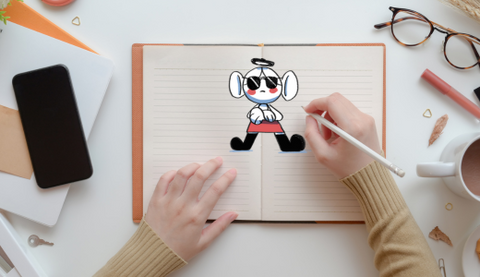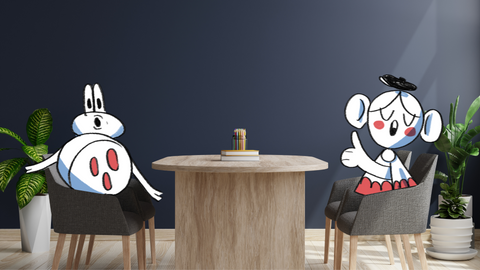On a warm, drizzly evening the other day, I took my dog, Coco, round the block for a quick pre-bedtime stroll.
It would not turn out to be quick.
The great thing about having a dog is that they’re an immediate icebreaker. Especially when she’s cute (and needy for attention!)
Usually, the conversation goes:
“Oooh, hello! What breed is he?”
“She’s a cockapoo.”
“Oh, so sorry, it’s a girl! How old is she?”.
“She’s 2 years old.”
“Aww, she’s lovely.”
We’re nearly back at the house when Coco darts off to greet an old man who just arrived home on his bicycle.
He stiffly dismounts - wearing a tired leather jacket and Laker’s basketball hat.
And predictably, we’re off with the dog-small-talk - but not in the way I expect.
“Does she want some turkey?” he bellows in a thick Yorkshire accent.
“She couldn’t say no!” I chuckle.
I watch as he trundles back inside for a few minutes and emerges with a giant pan of sliced up left-over turkey.
Ears pricked up, Coco can’t believe her luck. Meanwhile, the old man skips the pleasantries. He begins to tell me how doctors installed his pacemaker whilst completely awake.
I got the sense that this wasn’t going to be a 2-minute friendly pit-stop. I was trapped - at the mercy of his life story. I was also starting to get very damp.
Whilst Coco is chowing down, he tells me about the ins and outs of how the human heart works.
I wasn’t really listening. I was plotting my escape.
Then, quite abruptly, we stop talking about arteries and veins.
“Does she want some more turkey?”
“Look at her, she can’t say no!” And nor can I.
He trundles back inside again.
For the next few minutes, standing in the rain waiting for this old man to get more turkey - I had a mental shift.
I thought back to the Story Listening card from Storyteller Tactics, which I had been typesetting earlier that evening.
I stoically accepted my fate and banished the idea of trying to leave the conversation.
I could tell he was really enjoying showing off his ventricle knowledge to me. So I indulged him and decided to really listen. And that doesn’t mean being quiet - it means asking questions to go deeper. It turned out to be easier than I thought. I learned the old man’s name was Kenny, and he lived alone.
When Kenny returned, he hooked me back into his story immediately.
“Do you know what the sinus node is?”
Obviously, I didn’t know, but now I needed to.
“It’s not what you think, not the like the sinus that’s in your face!”
Kenny described how they fitted his pacemaker after he had a “double” heart attack.
I’ll spare you the details, but Kenny didn’t just tell me what happened.
He showed me. Motioning a knife cutting open a cavity - precisely next to my heart.
Then he described the appearance and weight of the goop they took out to make room for the pacemaker.
Kenny’s theatrics continued for another half an hour. I was utterly captivated. Then like a wind-up toy car running out of drive…
“Right, I best go now; I’m a busy man! I’ve got things to do. Nice to meet you, Coco!”
And that was that.
“Does she want a bit more turkey for the road?”
Okay, not quite over. But sure, Coco can’t say no.
—
When I got home, I gleefully told my wife all about the zany old man Kenny. The stories he told were so visual that I could almost retell them word for word and pass on the same thrill to Becky.
Aside from learning that your small intestine is 24 feet long and that your heart pumps your blood around your body 2000 cycles in an hour, Kenny taught me something else.
It was that by deciding to consciously give my full attention without the motive of trying to get out of the conversation (or try and tell my own story), I realised:
- People love to tell their stories (especially our elders, who have a discography of well-rehearsed stories that come out again and again!)
- What can you learn about yourself from indulging them? (I was rewarded for my patience and acceptance, and Coco got a second dinner!)
- What parts do you remember the most? Break it down: what was it about those moments that make them memorable?
- How can you steal their storytelling style for yourself?
We remember things that are concrete in our minds. So when you tell someone about a ventricular system but point to the guttering of a nearby house to explain it - it sticks.
Tactics in this story
The Movie Time tactic is an important card, as it prompts you to make sure the story you are crafting plays an image in your audience’s mind.
Story Listening (coming in the final deck) reminds you to listen, but also helps you find the teachable moments in the stories you hear.









